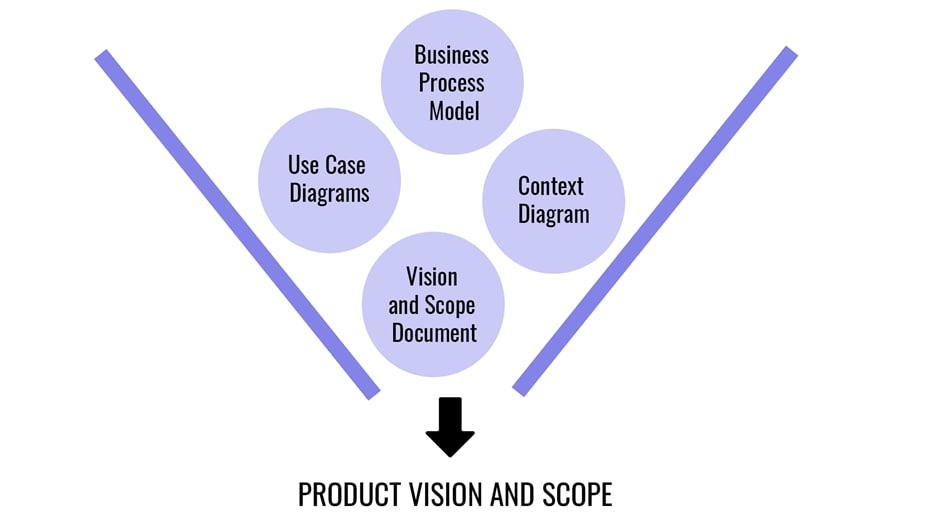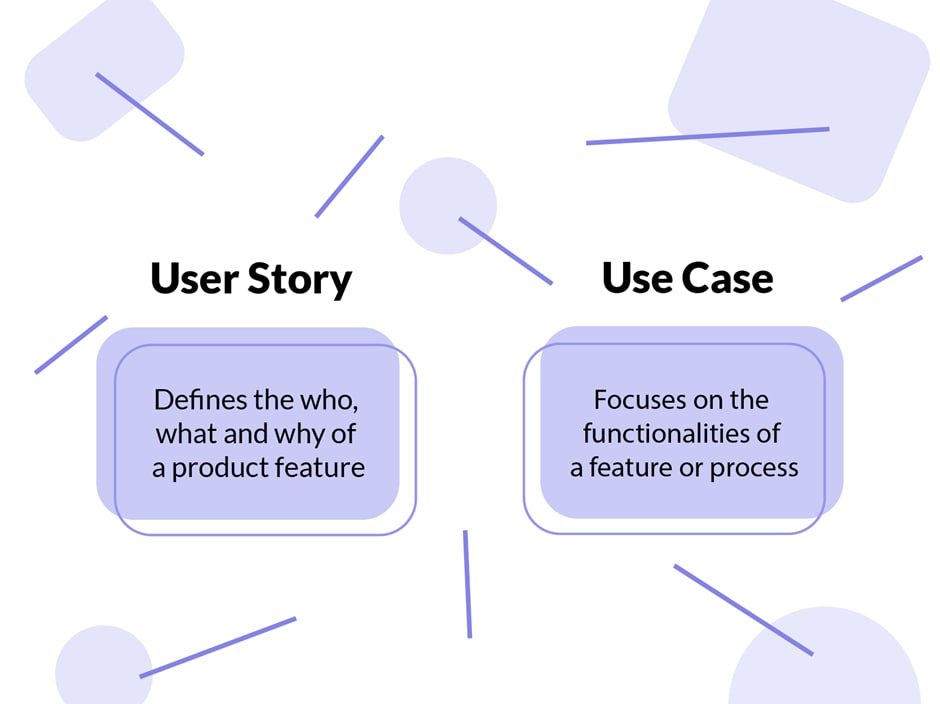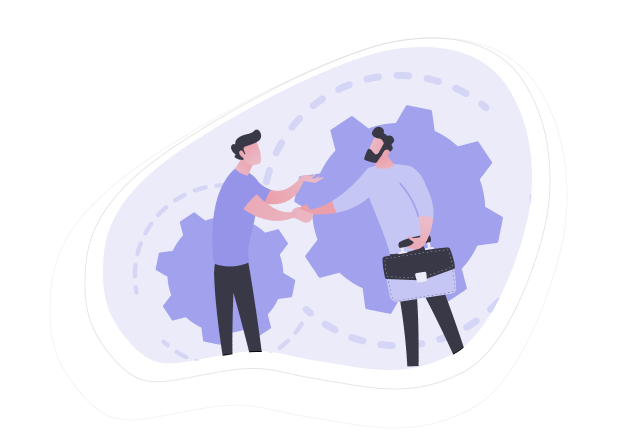Business analysis artifacts have specific functions in software development. Even if you don’t know what they are, you have probably heard of them.
These artifacts may differ depending on the approach and technology utilized to create them. But business analysts generate them during different stages of software development to assist them in tracking the process.
Without further ado, let’s look at the types of artifacts and requirements to create them, starting with a word on why you need them.
In this article:
Importance of Artifacts
Business analysis artifacts are products of various complex collaborative BA activities with all project stakeholders—from visionaries to developers and final customers. The artifacts help you understand what capabilities and processes your enterprise has now, what will be in the future, and how to get that future effectively. These elements are crucial for software development and help render an easy process.
For instance, if the business analyst doesn't capture the value of a feature and its boundaries in terms of scope, it may cause gold-plating and enormous time and money waste.
Here are a few points why artifacts are important:
- Keeping track of software and its features becomes very easy
- Understanding the strategy for software development and processes to be automated and digitized
- Artifacts help developers understand the intricate workings of the software
- It further helps developers access the software from anywhere at any given time
That said, the first document required would be the vision and scope document.
Vision and Scope

Like any other project, the first step of app/software development is knowing what you want and what the big picture is.
This artifact, in other words, outlines the goal, features, the tech needed, and everything else. With this, you will also understand the scope of work required for developing that software. You can consider this to be a type of reconnaissance mission.
There is a list of documents that will help you with the same:
Vision and Scope Document
This document contains information regarding the software/apps' vision and business goals. It also holds information on the major functionalities and features of the app. It helps developers and entrepreneurs jot down the objective and scope for the app/software and figure out how to bring the idea to life.
Context Diagram
This document displays how an app/software will engage and interact with users as well as other systems. In essence, it gives developers a fair idea of the end result; it will let developers know how this software or app will interact with people who use it or how it interacts with other systems.
Use Case Diagrams
The main function of this document is to list all the key use cases in the particular system. In layman's terms, it's a visual depiction of how the application/software will interact with a specific system.
Business Process Model
Among the most important artifacts is the business process model. This artifact will help you understand the core features and functionalities of the software and ensure you don't leave out any information when explaining to anyone involved in the project. It helps in understanding the primary functionalities as well as the intricate workings of the app.
Requirement Specification
Once the vision and scope of your app/software are ready, you should move to the next part, which is jotting down the specific requirements needed to move ahead with the development of the software/app in question.
Initially, you don't have to use all of them, but you should understand what type of information will work for specific cases.

By the way...
Get to know more about the project's estimation
In this article, we'll tell you how to estimate your project's timeline and price. Find out what to expect from your vendor
Show meHere are the business analysis artifacts included here:
Use Cases
Use cases refer to the account of how an individual makes use of certain methods to achieve a specific end goal. In technical terms, it's a chronicle of how the user interacts with the system or a device. It also holds information on how the system/device will respond to requests of the end-users (referred to as actors), which could be humans or other systems.
Furthermore, it also helps developers analyze, identify, and clarify the project's requirements in the beginning. In other words, it contains almost every important information.
User Story
On the other hand, a user story refers to the "who, why, and what?" of the end result. This is written from the perspective of the end user. User stories are typically not as detailed as user cases and are simpler by nature.
But do not mistake fewer words for lack of information. A user story contains important information usually condensed into concise sentences. Before a user story is made, the business analyst needs to develop a user persona and put together every product requirement.

Software Requirements Specification
Devising requirements is a complicated job, as it includes a set of operations such as elicitation, research, specification, validation, and administration. Once the vision and scope are formed, the next step is to come to the requirements specification. There are two necessary for software requirements specifications:
- Functional and non-functional specifications.
- Business requirements.
First, let us explain to you what functional specifications and functional requirements are:
- Functional specifications are product features developers must enforce to allow users to complete tasks. Therefore, it's important to have clarity for the development group and the stakeholders. Normally, functional requirements define system conduct under specific situations.
- Functional requirements are necessary for capturing the conscious conduct of the system. The nature of the conduct is expressed in the form of services, tasks, or functions. The specifications should be in a way that is in sync with the project's needs.
For instance, if a user is called an actor, the different functions are depicted in the diagram. Each of these functions is broken down into steps that include the "happy path," i.e., the most likely positive alternative featuring no error conditions, as well as alternative routes.
Keeping them in mind, it’s time to check the non-functional ones.
- Non-functional requirement specifications examine the solution's requirements that define how well the functional requirements must perform. It specifies criteria that can be used to judge the system's operation rather than specific behaviors.
- Non-functional specifications are often referred to as the quality traits of the system. A detailed plan is designed to execute the non-functional requirements. While functional requirements describe what a system should do, non-functional requirements define how a system should be.
- Non-functional requirements judge the analysis based on responsiveness, safety, portability, and other non-functional criteria critical to the project's success.
For example, the message on the system must be updated for all users in a chat within 0.1 seconds so that all users can be present online and have a long-term evolution (LTE) connection.
As per business requirements, they are an extremely useful artifact for both developers and business owners. With its help, one can think critically through the entire functionality of the product in a business context around, ensure that anything does not get left out, and easily explain it to anybody involved.
The next thing to know is the models that help take the project further.
Quick health check
Is your business analysis good enough? Are you sure? Check out how your company is doing
Workflow Model
Workflow is an advanced version of a business model that shows the usage of application logic with different user roles applied.
After designing and developing the workflow model for the business requirements, the next step is the conceptual data model, logical data model, and data dictionary.
Conceptual Data Model, Logical Data Model, and Data Dictionary
A tech specialist or architect normally develops these three artifacts. It is necessary to plan all the data architecture before the start of development to avoid any work needing to be redone at later stages.

Just in case you need it
Product Owner Anti-Patterns
Product owner anti-patterns can quickly derail the entire development process in a scrum team. Find the perfect specialist
Tell me moreUser Personas
You should know the customer to ensure the product meets the business goals. Preparing user profiles or personas will allow both developers and businesses to understand the target audience well.
Risk Assessment
The risk assessment determines the position of the project's success in the future. A risk assessment studies the pieces of software's potential dangers and drawbacks.
Prototypes
Prototypes are a critical aspect and a practice used in multiple disciplines. Architects, industrial designers, project managers, and service designers commence their projects by preparing the prototypes first to test their designs and service before beginning the operation on a mass scale.
Prototypes give a developer a better insight into what has already been done and tried and a sense of where to go next.
Business Analysis Approach
The business analysis approach is the plan developed by the senior member of the project team that will describe how they will execute all the business analysis activities. This includes analysis of resources and their roles and responsibilities, requirements, review process, change management approach, and agreed deliverables.
Once the business analysis approach is designed, the next step is formatting the artifacts.
This includes business analysis resources and their roles and responsibilities, requirements review process, change management approach, and agreed deliverables.
Once the business analysis approach is designed, the next step lies in formatting the artifacts.
Artifacts Formats
Artifacts formats are documents produced before the development of the project that holds valuable and other additional information for the project team and the stakeholders. The information provided in the artifacts, the format, layout, structuring, and ownership of artifacts will vary depending on the creator and in which domain artifacts will be utilized.

- Text. Usage of this artifact format helps create rich-text needed content that includes text, images, and included artifacts. This format is useful for text-based artifacts, such as use case specifications, stories, features, business goals, and glossary terminologies.
- Collection. A collection is a format used to cluster a set of related artifacts in a group. A collection accounts for all the necessary project details and ensures that the details match the specifications for the project.
- Module. A module is a format utilized to create an organized document that includes all the artifacts present in a module. For the success of any project, it is important for the business analyst to prepare a module that contains every single piece of information.
- Diagram. The diagram is used to create visual and pictorial artifacts such as wireframes, business cycle diagrams, and use case diagrams. A diagram represents how the project will appear, and based on that, the commencement of the project initiates.
These are the artifact formats that are required for every project. But it is important to acknowledge the help and support of the finest service provider.
Need a Professional Consultation? Ask Geniusee
Geniusee provides organizations with business analysis, a service that identifies business requirements and defines solutions to customer business issues. Solutions often have a software-systems development element, but it also consists of strategy improvement, organizational change, strategic planning, and policy development. For example, getting feedback on a newly launched smartphone is an important prospect for business analysis.
So the question might come to mind, "Why Geniusee?" Here are some of the factors to help in making a decision.
- Result-oriented team. Geniusee’s staff of experienced and qualified professionals is a committed, result-oriented team working to satisfy customers by delivering the best service possible.
- Versatile tech stack. Our service consists of various techniques designed and developed to solve customer-based issues.
- Quality is proven by numbers. Numbers speak for themselves. With over 100% results in timely service delivery, we are committed to the growth of the business.

On the topic
How to find a perfect tech partner?
Find out how to find the great partner that fits your needs perfectly.
Let's seeConclusion
As a business analyst, it is critical to register critical data and information and share it with the best team to complete the project within the determined timeframe. Therefore, artifacts prepared by business analysts come in handy. Still, have questions about business analysis? Ask Geniusee’s professionals.





















